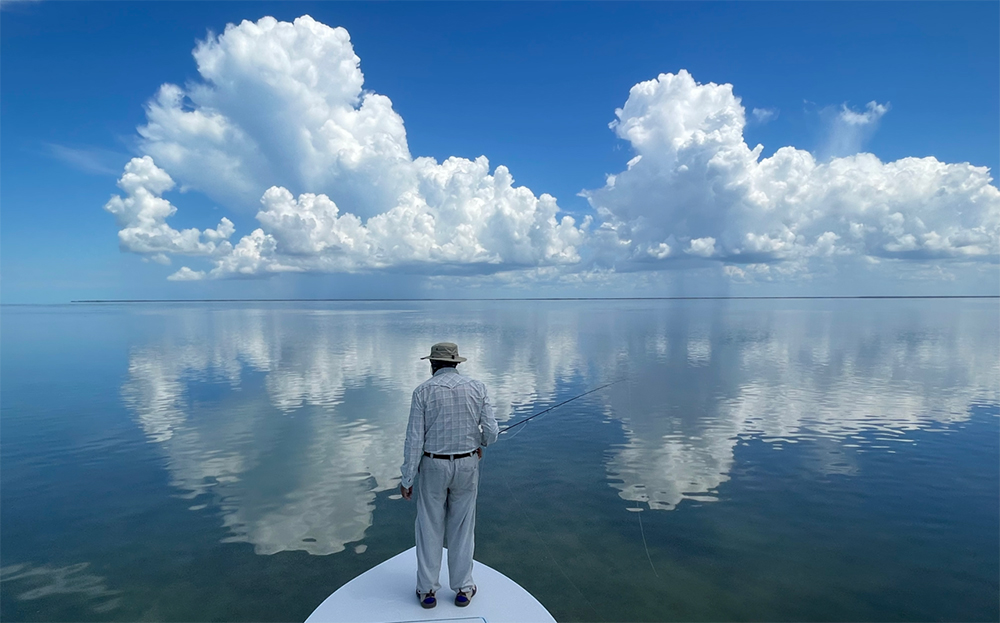La Vida Seis
by Chico Fernandez
May / June 2022 Issue 59
When I came to Miami in 1959, bonefishing in Biscayne Bay was a dream. Big bonefish, many over 10 pounds, were plentiful and relatively easy to approach, and a good cast usually got you a hookup. Few anglers were fishing the flats with light casting tackle, and even fewer with a fly rod, so fishing pressure was minimal. And it stayed that way for years.
But times change, and fishing pressure on the flats and other coastal areas continued to increase. It is not unusual today for fish in shallow water to spook from the fly line in the air, or to be more sensitive to the splash of the fly line landing on the water. Today’s fish also are more aware of terminal tackle—the diameter of the tippet or bite tippet. And in areas where they see lots of flies, they have become more difficult to fool.
 Despite the increasing pressure, I continued to use my 8-weight rod in the flats for bonefish, snook, and redfish. I used a longer leader on calm days, or I went down to a 7-weight. I still thought of my 6-weight as a fun light rod for baby tarpon or smaller bonefish in the Bahamas, Belize, Yucatán, and such.
Despite the increasing pressure, I continued to use my 8-weight rod in the flats for bonefish, snook, and redfish. I used a longer leader on calm days, or I went down to a 7-weight. I still thought of my 6-weight as a fun light rod for baby tarpon or smaller bonefish in the Bahamas, Belize, Yucatán, and such.
But little by little over the last few years, that has changed. I started to use my 6-weight for bonefish, redfish, and snook during very calm conditions. I found that I could cast most of the flies I use for reds and snook with no problem. Without realizing it, the 6 became the rod I used most in the flats. I would have bet against that a few years back.
Today, whether I’m on a bonefish flat or in the Everglades, a 6-weight is usually the first rod I use. Paired with a 10- or 12-foot leader (depending on conditions), and using a light 30-pound fluorocarbon bite tippet if needed, the combo is deadly. And habit forming. In fact, the 6 is now my go-to rod on the flats.
Even in windy conditions, I usually can still use my 6-weight because I have the advantage of being able to approach closer to a fish. I just shorten the leader to about 9 feet to make the turnover easier.
I also see a difference casting for cero mackerel, small amberjack, or yellow jacks on the reef. The light line with a long fluorocarbon leader usually gets more strikes. And what fantastic fun it is.


